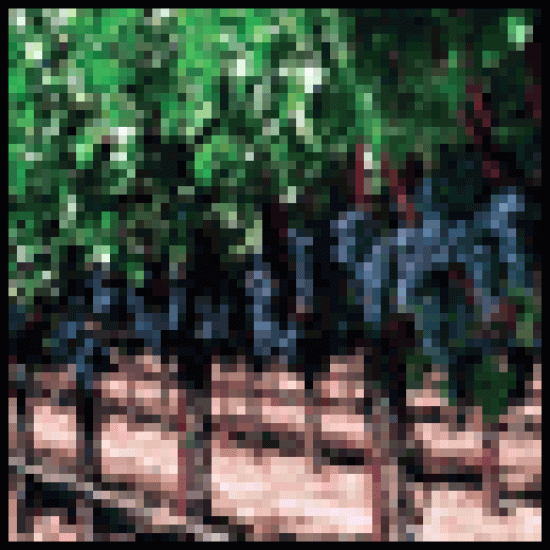Robert Joseph, Sarah Maxwell and Sam Caporn give the lowdown on BT's annual airline wine competition.
The Business Traveller wine awards first appeared in 1985 within the pages of our U.K. edition. Since then, we have tried to champion the best wines served in business class and first class by the world's airlines. This year's was the biggest tasting ever attempted and the first to be organized in conjunction with the experts at Wine International magazine, organizers of the world-respected International Wine Challenge (IWC).
Are airline wines important? Well, not like an airline's safety record or reputation for punctuality. And having a comfortable seat is pretty important, too. But whatever the health implications of drinking during a flight (and there can't be many travelers who don't understand the importance of moderation), a good glass of wine while you're traveling is a pleasure worth publicizing, and these awards are our contribution to the process.
That process was a complex one, especially because many of the wines had to be sent from airline depots around the world, and it was a rare day that we didn't receive a phone call from a bonded warehouse on a secure industrial estate somewhere close to Heathrow Airport, with someone inquiring just who was going to pay the duty on the wines. We also had to ensure that the tastings were conducted as fairly as possible, so for the first time, we teamed up with Wine International, which has extensive experience with large-scale tastings—the most notable being the IWC.
We judged the best first- and business-class wines. Why not include economy? These were by far the most Cellars in the Sky Awards we had attempted, even with just first and business class. Also, because of airline budgetary considerations, it is in business and first that the choice of wines becomes truly interesting.
Of course, it takes real skill to choose affordable but drinkable economy-class wines, and the same teams who select these wines are involved in the choices for business and first class. We don't think we lost out by excluding economy-class wines this year, but to counter any accusations of elitism, we will seriously consider including them in next year's awards.
Months in advance of tasting, we asked all the airlines to supply wines that they felt best reflected the quality and selection of wines they serve onboard. An airline could not choose a wine that it felt was of superior quality if it was served only in small quantities on a few specific routes.
In both business class and first class, each airline could enter just one wine in the categories of Best White, Best Red, Best Champagne/Sparkling and Best Fortified or Sweet. For a "wild card" category, an airline could supply a wine that it was particularly proud of, that was a good reflection of the wines of the airline's home country or that demonstrated the airline's innovation in selecting its wines. Rather than judging the wines individually, we used the "wild card" category to help determine the best overall cellar in each class.
The airlines were free to submit wines in as many or as few categories as they wished, with the only stipulation being that if airlines wanted to be considered in the Best Cellar category for that class, they must enter at least red, white and sparkling wines. Airlines also had to provide certain information to assist us in laying out the wines in a correct way for tasting, including the region of origin, level of oaking, principal grapes, alcohol level and official quality status.
Airlines supplied copies of their wine lists in both classes, which were judged separately on their originality and were considered when deciding Best Cellar. Airlines had to supply four bottles of each wine, as the tastings were to be conducted over two days, with the finalists tasted again on the second day, and to cover the incidence of wines being damaged or corked.
More than 70 airlines were invited to participate, and those who declined did so for various reasons. Some admitted that their wine was not the aspect of their service of which they were proudest. For some airlines, onboard products—including both food and wine—were in the process of being upgraded.
ORGANIZING THE TASTINGS
SAM CAPORN, tastings coordinator of Wine International
The wines were delivered to Grosvenor House Hotel in London, where, over two days, a team of masters of wine and Wine International experts (see box) assessed them. They were flighted, or categorized, according to whether they were business-class or first-class entries and then subdivided into sparkling, white, red and fortified or sweet. The wines were tasted according to country and region, with the lighter, cooler-climate wines being tasted first, and all were tasted blind, allowing greater objectivity and a complete lack of bias.
The wines were all tasted individually and scored on a scale of 100, with each judge bearing in mind that acidity and tannins are accentuated by air. If there were any quality issues (for example, questions over whether a wine was entirely clean; perhaps it was corked), then a new bottle was opened and tasted.
Once the judges had finished tasting a particular flight (such as first-class whites), they would go through their scores together, retasting and assessing the wine until a final score was agreed on. As Beverley Blanning MW explained, "We judged the wines on their merits but awarded extra marks if we felt the wines would taste especially good at altitude. For this tasting, we were looking for wines with good fruit that were not excessively tannic."
So how did the wines fare? Did they impress the judges overall? Blanning said, "It's important to remember that these wines are, on the whole, not very expensive—that is, in relation to the extra price of the airline ticket," and she adjusted her expectations accordingly. Nevertheless, Blanning "was impressed by the overall quality of the sparkling wines, many of which had lovely richness and yeastiness that would perform well at altitude."
The judges found that some categories were very consistent in terms of quality, while others were much more varied. Sam Harrop MW said, "The overall quality of the first-class wines submitted, especially the Burgundy and Bordeaux, did not reach my own lofty expectations." But he conceded, "There were some super wines."
Peter McCombie MW, "disappointed by the quality of the red wines," felt that that too many airlines are buying tight, tannic European wines. According to McCombie, "The reality is that way up there, good-quality new-world wines probably deliver the goods more consistently."
Blanning said, "The whites were a very mixed bag," and noted that in both the business- and first-class categories, this is where the majority of poor wines were found—not corked but oxidized and tired. However, she found that on the whole, the assorted fortified and sweet wines were good. And despite any of their reservations, all of the judges agreed that this was a fascinating tasting.
The Judges
Richard Bampfield MW is a specialist in corporate wine events. Beverley Blanning MW is a wine writer. Julien Brind MW is a wine consultant for Waitrose Ltd. Samantha Caporn is tastings coordinator of Wine International. Sam Harrop MW is an industry consultant. Robert Joseph is publishing editor of Wine International. Peter McCombie MW is a restaurant wine consultant. Charles Metcalfe is associate editor of Wine International. Liz Robertson MW is an independent consultant. Derek Smedley MW is a wine consultant. Simon Woods is an author and the First Taste columnist for Wine International.
Business CLASS
Best White
1 British Airways
Labouré-Roi Meursault 2002, Burgundy, France
2 (tie) Air New Zealand
Highfield Estate Sauvignon Blanc 2003, Marlborough, New Zealand
Qantas Airways
Grosset Riesling Rockwood Vineyard 2004, Clare Valley, Australia
Cathay Pacific
Framingham Sauvignon Blanc 2003, Marlborough, New Zealand
Best Red
1 American Airlines
Château Batailley 2000, Pauillac, Bordeaux, France
2 Cathay Pacific
Antinori Tignanello 2000, Tuscany, Italy
3 (tie) Northwest Airlines
St. Clement Cabernet Sauvignon 2000, Napa Valley, California
Alitalia
Fattoria del Cerro Vino Nobile de Montepulciano 2000, Tuscany, Italy
Best Champagne/ Sparkling
1 Korean Air/KLM/Japan Airlines/Icelandair
Piper-Heidsieck Brut NV, Champagne, France
2 British Airways/Qantas Airways
Charles Heidsieck Brut Réserve Mis-en-Cave 2000, Champagne, France
3 (tie) Singapore Airlines
Piper-Heidsieck "Rare" Cuvée Réservé NV, Champagne, France
Finnair
Pol Roger Extra Cuvée de Réserve Brut 1996, Champagne, France
Best Fortified or Sweet
1 Cathay Pacific
Dow's Late Bottled Vintage Port 1997, Douro, Portugal
2 Finnair
Château Guiraud Premier Cru 1998, Sauternes, France
3 Lufthansa
Graham's Late Bottled Vintage Port 1998, Douro, Portugal
First CLASS
Best White
1 Cathay Pacific
Vincent Girardin Meursault Vieilles Vignes 2001, Burgundy, France
2 Etihad Airways
Domaine Roux Père et Fils Puligny Montrachet Les Enseignières 2002, Burgundy, France
3 Singapore Airlines
Dr. Loosen Urziger Würzgarten Riesling Kabinett 2000, Mosel, Germany
Best Red
1 Korean Air
Château Giscours 1999, Bordeaux, France
2 Etihad Airways
Possums Vineyard Shiraz 2001, McLaren Vale, Australia
3 Qantas Airways
Saltram No. 1 Barossa Shiraz 2000, Barossa Valley, Australia
Best Champagne/Sparkling
1 Malaysia Airlines
Billecart-Salmon Grand Cru Blanc de Blancs 1997, Champagne, France
2 (tie) Qantas Airways
Dom Pèrignon 1995, Champagne, France
Japan Airlines
Pol Roger Sir Winston Churchill 1995, Champagne, France
3 Lan Chile
Taittinger Comtes de Champagne Blanc de Blancs 1995, Champagne, France
Best Fortified or Sweet
1 Japan Airlines
Graham's 30 Year Old Tawny Port, Douro, Portugal
2 Varig
Warre's Quinta da Cavadinha Vintage Port 1986, Douro, Portugal
3 American Airlines
Graham's Malvedos Vintage Port 1995, Douro, Portugal
Overall Awards
Best Business cellar
Winner: Cathay Pacific
Runners-Up: American Airlines, British Airways, Icelandair
Best First Cellar
Winner: Japan Airlines
Runners-Up: Etihad Airways, Malaysia Airlines, Qantas Airways, Lan Chile
Best Airline Alliance
1 Oneworld
2 SkyTeam
3 Star Alliance
Most original business wine list
Winner: Delta Air Lines
Shortlist: American Airlines, Alitalia, British Airways, Finnair, Northwest Airlines, Cathay Pacific
Most original first wine list
Winner: Japan Airlines/Cathay Pacific
Shortlist: British Airways, Etihad Airways, Qantas Airways, Thai Airways International






